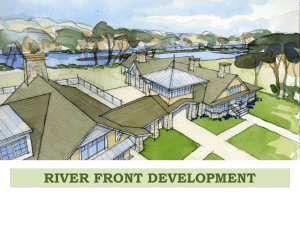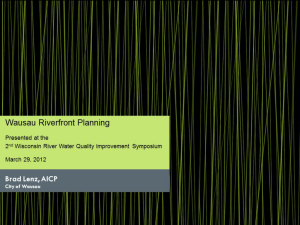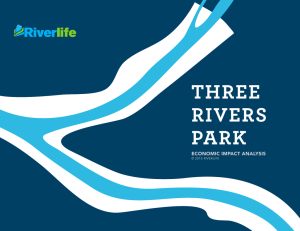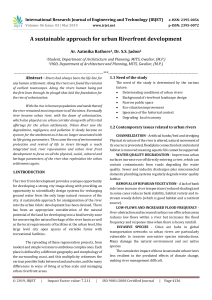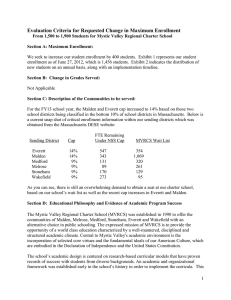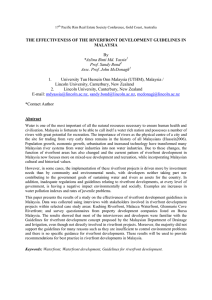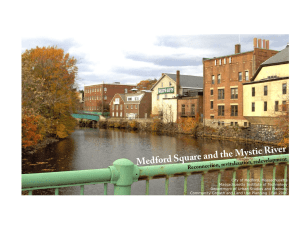MYSTIC RIVER WATERFRONT – A PLAN AND VISION FOR CIVIC... The City of Medford, acting through its Office of Community... the Community Growth and Land-Use Planning course of MIT (11.360)...
advertisement
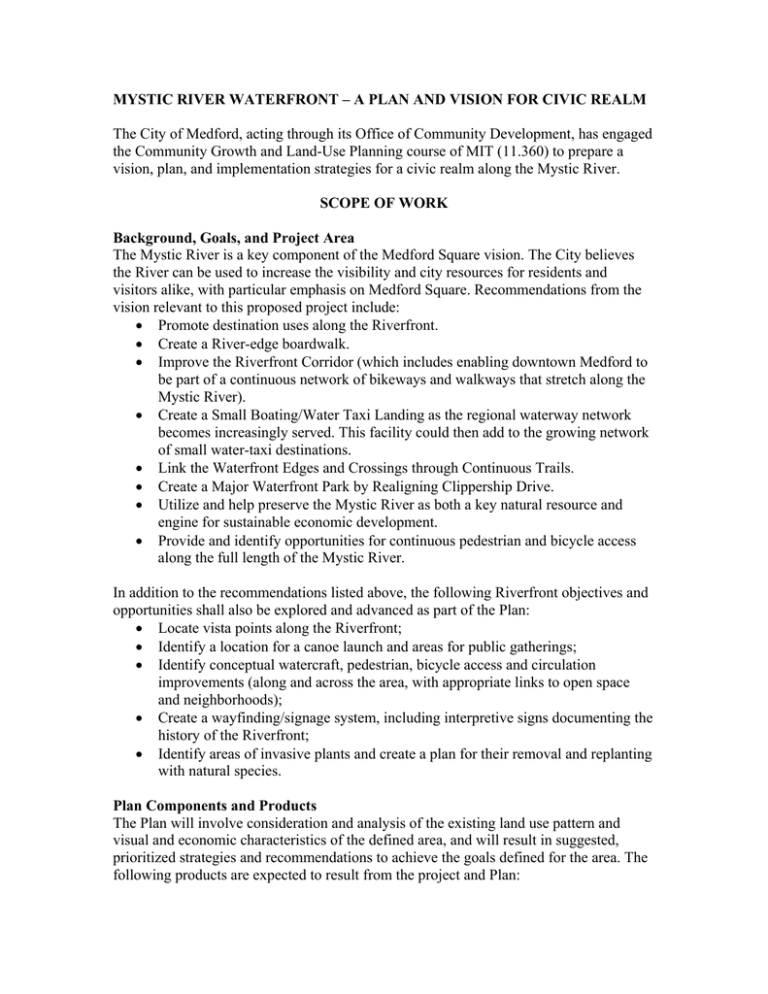
MYSTIC RIVER WATERFRONT – A PLAN AND VISION FOR CIVIC REALM The City of Medford, acting through its Office of Community Development, has engaged the Community Growth and Land-Use Planning course of MIT (11.360) to prepare a vision, plan, and implementation strategies for a civic realm along the Mystic River. SCOPE OF WORK Background, Goals, and Project Area The Mystic River is a key component of the Medford Square vision. The City believes the River can be used to increase the visibility and city resources for residents and visitors alike, with particular emphasis on Medford Square. Recommendations from the vision relevant to this proposed project include: • Promote destination uses along the Riverfront. • Create a River-edge boardwalk. • Improve the Riverfront Corridor (which includes enabling downtown Medford to be part of a continuous network of bikeways and walkways that stretch along the Mystic River). • Create a Small Boating/Water Taxi Landing as the regional waterway network becomes increasingly served. This facility could then add to the growing network of small water-taxi destinations. • Link the Waterfront Edges and Crossings through Continuous Trails. • Create a Major Waterfront Park by Realigning Clippership Drive. • Utilize and help preserve the Mystic River as both a key natural resource and engine for sustainable economic development. • Provide and identify opportunities for continuous pedestrian and bicycle access along the full length of the Mystic River. In addition to the recommendations listed above, the following Riverfront objectives and opportunities shall also be explored and advanced as part of the Plan: • Locate vista points along the Riverfront; • Identify a location for a canoe launch and areas for public gatherings; • Identify conceptual watercraft, pedestrian, bicycle access and circulation improvements (along and across the area, with appropriate links to open space and neighborhoods); • Create a wayfinding/signage system, including interpretive signs documenting the history of the Riverfront; • Identify areas of invasive plants and create a plan for their removal and replanting with natural species. Plan Components and Products The Plan will involve consideration and analysis of the existing land use pattern and visual and economic characteristics of the defined area, and will result in suggested, prioritized strategies and recommendations to achieve the goals defined for the area. The following products are expected to result from the project and Plan: • • • • • Development of realistic recommendations to advance the goals and objectives set forth above, including the enhancement of Riverfront access, including recommendations for land use, redevelopment, landscape and design improvements and amenities to promote connections and greater imageability; Conceptual recommendations and reuse strategies for high visibility, especially for key parcels that are likely to exert positive influence on the Plan or have major reuse or redevelopment potential; Specific recommendations for strengthening, nurturing, and promoting connections to the river, greenspace, and adjoining neighborhood and commercial areas; Conceptual design guidelines and incentives that could be considered by the City to foster planning objectives; and Suggested revisions to the Zoning Code (both map and text amendments) to support plan objectives, including potential revisions to existing zoning requirements and zoning district boundaries. The “Final Plan” document will include the inventory and analysis conducted, along with recommendations and other accompanying features and details, which are likely to include maps, illustrations, tables, and relevant data and information. Two formal presentations related to the Plan will be made by student teams to the City: a Preliminary Plan findings presentation, and a Final Plan presentation. It is anticipated that the Office of Community Development will invite members of the City Council, Planning Board, residents, business owners, and other interested persons to attend these meetings. An initial “project briefing” session with the Director of the Office of Community Development will be held to acquaint students with the scope of the project. This briefing will be held on September 12, 2006 during class time at MIT. Start Date: September 12, 2006 Completion Date: December 15, 2006
